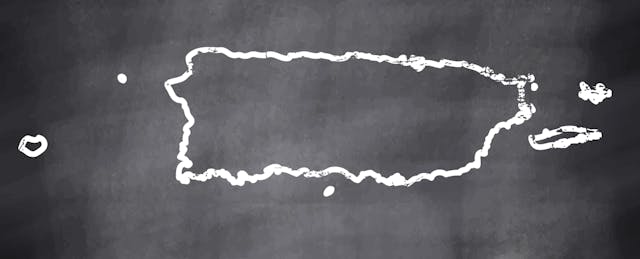San Juan, Puerto Rico—The pandemic has been just one of the challenges facing teachers in Puerto Rico. The island is still struggling with the aftermath of the 2017 Hurricane Maria, which destroyed a large part of the electrical system. And in January 2020, a series of earthquakes left many children in the southern part of the island without schools, after compromised buildings had to be closed for safety reasons.
So that has made remote teaching during the pandemic an even greater challenge, since many students struggled to find reliable power, as well as computers and Internet access.
For Luis A. Martínez Moyet, a math teacher at Villa Granada Middle School, located in San Juan, that meant getting creative, asking students to use short lessons and resources on sites like Khan Academy and ThatQuiz.org, and being available at all hours.
"The interesting thing was to see students doing their homework at 11 p.m., and I was ready to attend to them,” says Martínez Moyet. “They called me or wrote to me on WhatsApp. There was a lot of communication between teacher and student—information flowed.”

For Antonio Sierra, who teaches visual arts in a school in San Juan, one challenge has been overcoming the lack of materials for his art classes.
"The materials they use are because I provide them or because other students from past years donate and give them away,” he says. “Others that we use were donated by Arte al Rescate, a nonprofit in Chicago that sent us materials after the emergency.”
The situation improved in March, when the federal government released more than $900 million in COVID-relief funds for education that had been restricted by the Trump Administration. The current U.S. education secretary, Miguel Cardona, is of Puerto Rican heritage and has said the aid is needed to help the island reopen schools.
Starting in July 2020, the Puerto Rico Department of Education distributed computers to connect to classes and implemented the Microsoft Teams system as the official teaching system. However, the digital divide has remained.
"Even though they had the equipment and free Internet access paid for by the state, they didn't know how to handle it,” says Martínez Moyet, who notes that some students were unfamiliar with how to send an email. “The problem was the technology gap” in terms of skills.
Earlier this month, the associate undersecretary for Education, Héctor Joaquín Sánchez, said that some 45,000 students—roughly 25 percent of students—were failing at least some of their classes. The department is working on a plan to try to help students catch up this summer, according to Eliezer Ramos Parés, Acting Secretary of Education.
Despite the challenges of online education, however, some teachers see bright spots.
“I love the transformation I had as a teacher—it has been rewarding,” says Martínez Moyet. “The students are working a lot. For me, this is a moment of overcoming.”
Sierra also sees the move online as an opportunity to diversify the way courses are offered. “I see that with virtuality there are also many ways to enrich classes and offer workshops and talks,” he says. “I have even had the opportunity to travel while I am offering classes.”
For Antonio Delgado, an instructional designer who has studied and researched online education in Puerto Rico since the ‘90s, moving forward after experiencing the COVID-19 pandemic means changing attitudes toward technology and its implementation in the island's educational model.
“We cannot keep thinking about getting back to normal,” Delgado says. “It is time to return to the classroom with an open mind and [be] open to modalities combined with a structured and organized plan that supports them.”


